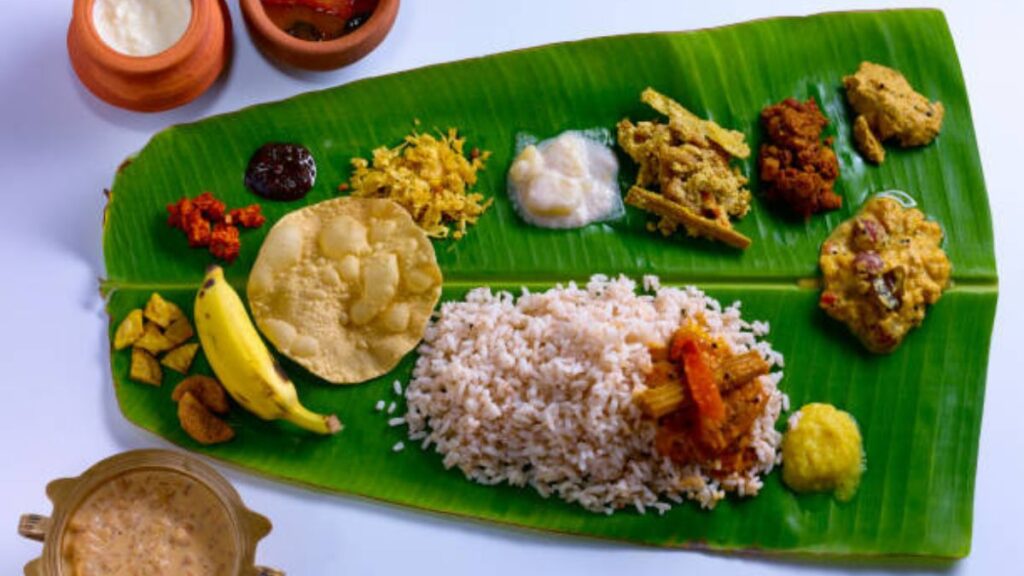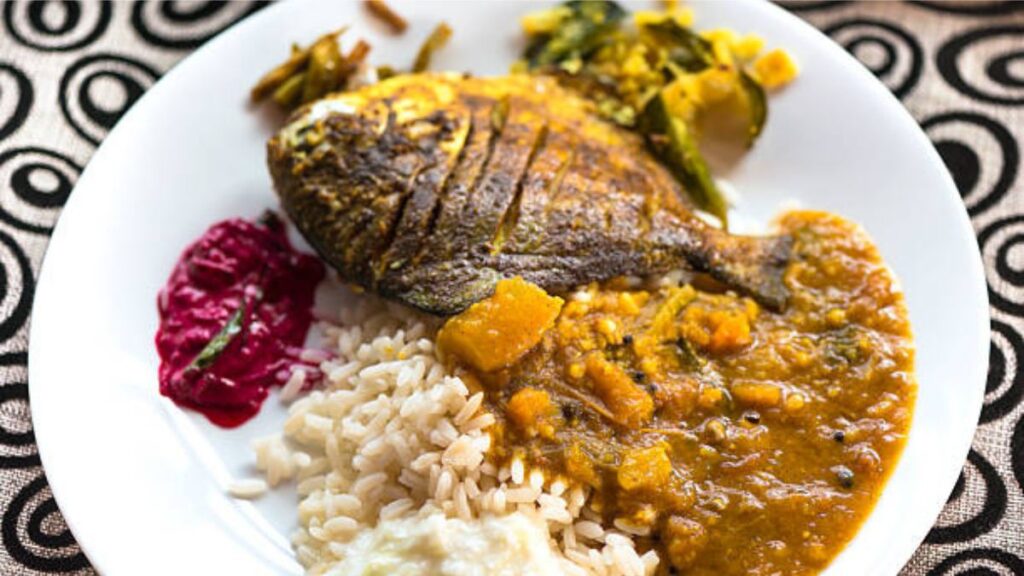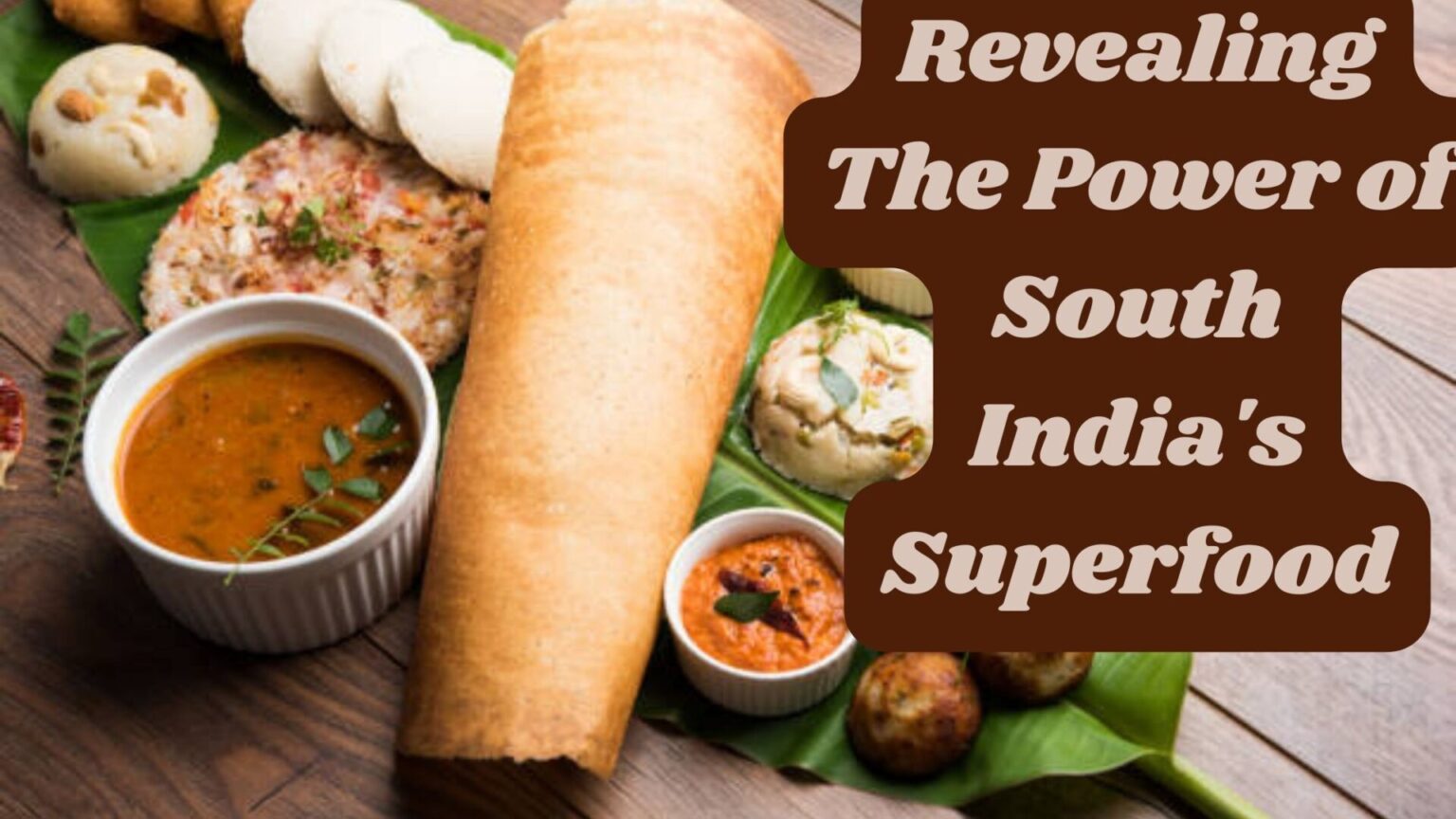Introduction:
Revealing the Power of South India’s Superfood: Unlocking the Nutritional Riches

In the vibrant tapestry of South Indian cuisine, there lies a culinary secret that transcends taste – a superfood packed with unparalleled nutritional richness. Join us on a journey as we unveil the mysteries behind South India’s most powerful superfood, exploring the incredible health benefits that make it a nutritional powerhouse.
What is the most nutrient food of South India’s, and why?
Determining the single most nutrient-dense food in South India can be subjective, as the region boasts a rich and diverse culinary landscape with numerous healthful options. However, one notable candidate often recognized for its nutritional benefits is “Drumstick Leaves” or “Moringa Leaves.”
Drumstick Leaves: The Nutrient Powerhouse of South India
1. Rich in Vitamins and Minerals:
Drumstick leaves are abundant in essential vitamins such as vitamin A, vitamin C, and various B-vitamins. They also contain vital minerals like iron, potassium, and calcium, contributing to overall health and well-being.
2. Antioxidant Properties:
These leaves are packed with antioxidants, including quercetin, chlorogenic acid, and beta-carotene. Antioxidants help neutralize free radicals, reducing oxidative stress and inflammation in the body.
3. Complete Protein Source:
Drumstick leaves are a rare plant-based source of complete protein, containing all nine essential amino acids. This makes them an excellent choice, especially for vegetarians and vegans seeking alternative protein sources.
4. Anti-Inflammatory Benefits:
Studies suggest that drumstick leaves possess anti-inflammatory properties, potentially aiding in the management of inflammatory conditions within the body.
5. Blood Sugar Regulation:
Research indicates that the consumption of drumstick leaves may help regulate blood sugar levels, making it a valuable dietary addition for individuals managing diabetes or those aiming for balanced blood sugar levels.
6. Digestive Health:
With a high fiber content, drumstick leaves promote digestive health by preventing constipation and supporting a healthy gut microbiome.
7. Traditional Medicinal Uses:
In South Indian traditional medicine, drumstick leaves have been used to address various health issues, including respiratory problems, skin conditions, and digestive disorders.
8. Sustainability and Accessibility:
Drumstick trees are hardy, drought-resistant, and grow abundantly in South India. Their accessibility and sustainability make them a practical and eco-friendly choice for a nutrient-rich food source.
In summary, while “Drumstick Leaves” stand out for their exceptional nutritional content and health benefits, it’s important to note that South Indian cuisine offers a wide array of nutrient-dense foods. Including a variety of locally sourced fruits, vegetables, legumes, and grains in your diet ensures a well-rounded and wholesome approach to nutrition.
What is the healthiest South India’s dish?

Determining the “healthiest” South Indian dish can be subjective, as it depends on various factors such as individual dietary preferences, health goals, and nutritional needs. However, one South Indian dish that is often considered healthy due to its balanced nutritional profile and use of wholesome ingredients is “Sambar.”
Sambar: A Wholesome South Indian Delight
1. Rich in Vegetables:
Sambar is a lentil-based stew that typically includes a variety of vegetables such as drumsticks, pumpkin, brinjal (eggplant), and carrots. These vegetables contribute essential vitamins, minerals, and dietary fiber.
2. Protein-Packed:
The addition of lentils (usually toor dal) provides a good source of plant-based protein. This is particularly beneficial for vegetarians and vegans seeking protein alternatives.
3. Spices and Herbs:
The use of spices like turmeric, cumin, coriander, and mustard seeds not only enhances the flavor but also adds anti-inflammatory and antioxidant properties to the dish. These spices contribute to the traditional medicinal aspects of South Indian cuisine.
4. Low in Calories:
Sambar is generally low in calories, making it a suitable option for those looking to manage their weight. The inclusion of vegetables and lentils provides satiety without excessive calorie intake.
5. Digestive Benefits:
The combination of lentils and spices in Sambar supports digestive health. The fermentation process involved in preparing Sambar can increase the bioavailability of nutrients and aid in digestion.
6. Balanced Nutrition:
Sambar is a well-balanced dish that combines carbohydrates from lentils and vegetables, protein from lentils, and a moderate amount of healthy fats, especially if cooked with minimal oil.
7. Adaptable Recipe:
Sambar recipes are versatile, allowing for customization based on regional variations and personal preferences. You can adjust the spice levels, types of vegetables, and consistency according to your taste and dietary requirements.
8. Culinary Tradition:
Sambar is deeply rooted in South Indian culinary traditions and is a staple in many households. Its popularity is a testament to its delicious taste and nutritional value.
While Sambar is often considered a healthy option, it’s important to note that the overall healthiness of a dish also depends on preparation methods. Opting for minimal oil, whole ingredients, and controlling portion sizes contribute to making any dish, including Sambar, a wholesome part of a balanced diet.
Why is South India’s food so healthy?
South Indian cuisine is often regarded as healthy due to a combination of factors that contribute to its nutritional benefits. Here are several reasons why South Indian food is considered healthy:

1. Varied and Balanced Diet:
South Indian meals typically include a diverse range of foods, incorporating various grains, legumes, vegetables, and fruits. This diversity ensures a balanced intake of essential nutrients such as vitamins, minerals, fiber, and antioxidants.
2. Plant-Based Emphasis:
Many South Indian dishes are predominantly plant-based, featuring an array of vegetables, lentils, and legumes. This plant-centric focus aligns with dietary recommendations for a healthy lifestyle and is associated with numerous health benefits.
3. Incorporation of Whole Grains:
South Indian cuisine often utilizes whole grains like rice, millets, and oats, providing a good source of complex carbohydrates, fiber, and essential nutrients.
4. Use of Healthy Fats:
Coconut oil, a common cooking oil in South India, is rich in healthy saturated fats and has been associated with various health benefits, including improved heart health and metabolism.
5. Spices with Medicinal Properties:
South Indian dishes are seasoned with a variety of spices such as turmeric, cumin, coriander, and mustard seeds. These spices not only enhance the flavor of the food but also contribute medicinal properties, including anti-inflammatory and antioxidant effects.
6. Fermented Foods:
Fermented foods like idli and dosa are staples in South Indian cuisine. The fermentation process not only enhances the taste but also increases the bioavailability of nutrients, aids in digestion, and promotes gut health.
7. Minimization of Processed Foods:
Lessons from Isaiah 59:1-2 on Reconnecting with GodTraditional South Indian cooking relies on fresh and locally sourced ingredients, minimizing the use of processed foods. This approach supports a diet rich in natural and unprocessed components.
8. Culinary Diversity:
South India has a wide range of regional cuisines, each with its unique flavors and specialties. This diversity ensures a variety of nutrients and prevents monotony in dietary choices.
9. Culinary Techniques:
South Indian cooking methods often involve steaming, sautéing, and boiling, which help preserve the nutritional content of the ingredients. Minimal frying and deep-frying are common, reducing the intake of unhealthy fats.
10. Cultural Practices and Wisdom:
While these factors contribute to the overall healthiness of South Indian food, it’s essential to note that individual dishes and dietary choices can vary widely. As with any cuisine, the key to a healthy diet lies in moderation, balance, and the inclusion of a variety of nutrient-rich foods.
Conclusion:
In conclusion, South India’s most powerful superfood is a nutritional treasure waiting to be embraced. By unlocking its riches, you open the door to a healthier and more vibrant lifestyle. Whether you’re a culinary enthusiast, health-conscious individual, or simply curious, incorporating this superfood into your diet can be a transformative experience. Join the journey of discovery and unleash the full potential of South India’s nutritional gem.
FAQs
1. What is considered a superfood in South India?
Superfoods in South India typically include items like moringa (drumstick tree), turmeric, coconut, jackfruit, millets, and curry leaves. These foods are highly valued for their nutritional benefits and medicinal properties.
2. Why is moringa referred to as a superfood?
Moringa is called a superfood because it is rich in vitamins, minerals, and antioxidants. It contains significant amounts of vitamin A, vitamin C, calcium, potassium, and protein, which contribute to its health benefits such as boosting immunity, reducing inflammation, and improving bone health.
3. How is turmeric beneficial for health?
Turmeric contains curcumin, a compound with powerful anti-inflammatory and antioxidant properties. It is known to help reduce the risk of chronic diseases such as heart disease, cancer, and Alzheimer’s. It also supports joint health and improves digestion.
4. What nutritional benefits does coconut provide?
Coconut is a versatile superfood rich in healthy fats, particularly medium-chain triglycerides (MCTs), which can aid in weight loss and improve brain function. It also provides fiber, vitamins, and minerals that support overall health.
5. How can jackfruit be used in a healthy diet?
Jackfruit is a nutrient-dense fruit that can be eaten ripe or unripe. It is high in fiber, vitamin C, potassium, and antioxidants. Unripe jackfruit is often used as a meat substitute in vegetarian and vegan diets due to its texture and protein content.
References
- Moringa Benefits:
- “Nutritional and medicinal properties of Moringa oleifera” – Journal of Ayurveda and Integrative Medicine, 2016.
- “Moringa oleifera: A review on nutritive importance and its medicinal application” – Food Science and Human Wellness, 2015.
- Turmeric Health Properties:
- “Curcumin: A Review of Its’ Effects on Human Health” – Foods, 2017.
- “Therapeutic roles of curcumin: lessons learned from clinical trials” – AAPS Journal, 2013.
- Coconut Nutritional Information:
- “Health benefits of coconut water: A review” – Asian Pacific Journal of Tropical Medicine, 2013.
- “Coconut oil: a review of potential applications” – Lipids, 2016.
- Jackfruit’s Nutritional Benefits:
- “Nutritional properties and health benefits of jackfruit (Artocarpus heterophyllus Lam.)” – Food Science and Nutrition, 2020.
- “Bioactive compounds and health benefits of jackfruit” – Plant Foods for Human Nutrition, 2014.
- Millets as Superfoods:
- “Millets: Nutritional composition, some health benefits and processing – A review” – Emirates Journal of Food and Agriculture, 2012.
- “Health Benefits of Millets: A Review” – Journal of Food Science and Technology, 2014.
- Curry Leaves’ Health Benefits:
- “Health benefits and medicinal properties of curry leaves” – Journal of Traditional and Complementary Medicine, 2016.
- “Bioactive components and pharmacological properties of curry leaves” – Journal of Medicinal Plants Research, 2011.






